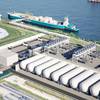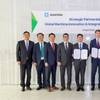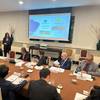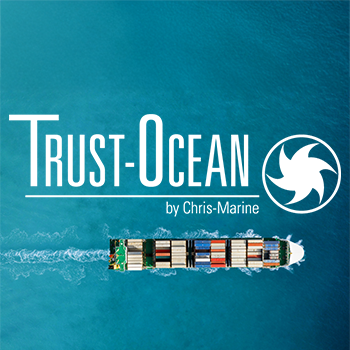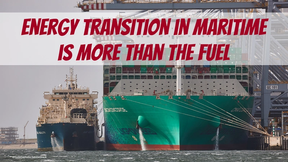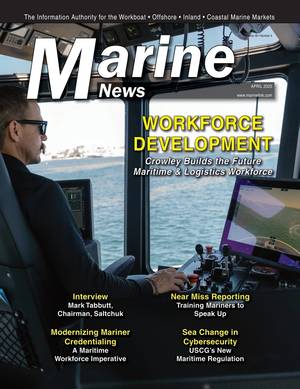Hurtigruten Unveils Zero-Emission Cruise Ship
Cruise operator Hurtigruten Norway has unveiled early concept plans for its first zero-emission ship.
Initially announced in March 2022, under project name ‘Sea Zero,’ the ship is being touted as "the world’s most energy-efficient cruise ship". Tasked with developing energy-efficient and carbon-neutral technology solutions, Hurtigruten Norway and its consortium of 12 maritime partners and research institute SINTEF shared key findings following its first year of research.
"When we initially announced the ‘Sea Zero’ project over a year ago, we were faced with the challenge of not knowing which technologies would be available to us in 2030. Our task was to pave the way for new innovations and enhance existing ones to align with our sustainability objectives," said Hedda Felin, the CEO of Hurtigruten Norway. "While some of these technologies have reached a relatively advanced stage, they still necessitate dedicated research and development to ensure successful implementation within the maritime context. On the other hand, certain technologies are still in early development and require fundamental research and thorough testing. Following a rigorous feasibility study, we have pinpointed the most promising technologies for our groundbreaking future cruise ships. We are committed to delivering a ship that surpasses all others in terms of energy efficiency and sustainability within just a few years."
Hurtigruten Norway plans for smaller, custom-built ships that leave a positive footprint with zero emissions to both sea and land. With the first ship ready in 2030, the company plans to transform its entire fleet into zero-emission vessels. Currently just 0.1% of ships worldwide use zero-emission technology.
Hurtigruten Norway’s future ships will be electric and equipped with batteries that charge in port. Combining 60-megawatt hour battery solutions with wind technology, the vessel is expected to feature numerous firsts and improved solutions that do not exist on cruise ships today, including retractable sails with solar panels, artificial intelligence maneuvering, contra-rotating propellers, and multiple retractable thrusters. Additional technologies include air lubrication, advanced hull coating, and proactive hull cleaning.
The new zero-emission ship is modeled at 135 meters (443 feet) long, with 270 cabins that hold 500 guests and 99 crew. The new ship will also have a significant cargo hold and transport cars. The three retractable, autonomous wing rigs will comprise 1500m² (16,146 ft²) of solar panels and a total wind surface of 750m² (8,073ft²), reaching a maximum height of 50m (164 ft) when fully extended.
Battery levels will be displayed on the ship’s external sides, while the bridge, where the captain and crew steer the ship, is expected to reduce significantly in size following enhanced A.I. maneuvering, mimicking that of an airplane cockpit. The cruise line will thus use A.I. to collect data that learns the most efficient docking and undocking methods for each port, improving in-port operations in bad or challenging weather.
Henrik Burvang, Research and Innovation Manager at VARD, the design and shipbuilding company behind the concept visuals, said "We are developing the concept for a very innovative cruise design and researching to find the optimal design methods suitable for zero-emission ships. The streamlined shape, with its innovative hull and propulsion solutions, not only reduces energy demand but also increases passenger comfort. In the process, we are developing new design tools and exploring new technologies for energy efficiency."
Guests will also help to minimize energy consumption through an interactive mobile app, where they can operate ultra-modern cabin ventilation, as well as measure their own water and energy consumption.
Sea Zero has now entered a two-year phase in which the proposed technologies will be tried, tested and developed further in pursuit of the final zero-emission ship. The current research and development phase focuses on battery production, propulsion technology, hull design and sustainable practices that reduce energy use to an absolute minimum. Developing new technologies for onboard hotel operations, which can consume up to 50% of the ship’s total energy use, will be crucial to the project’s success. The goal is a 50% energy reduction compared to Hurtigruten Norway’s current ships.
While Hurtigruten Norway is working toward its first zero-emission ship, the company is currently undertaking one of the most extensive environmental upgrades in European maritime history with its existing fleet. Two of the seven ships have been upgraded to battery-hybrid-powered ships, with a third to be upgraded this fall. The five other vessels are being outfitted with various technologies that will cut CO² emissions by 25% and NOx (nitrogen oxides) by 80%. In 2019, sister company Hurtigruten Expeditions introduced the world’s first battery-hybrid-powered ship, MS Roald Amundsen; the Expeditions arm now has three battery-hybrid ships out of its seven-ship fleet.




